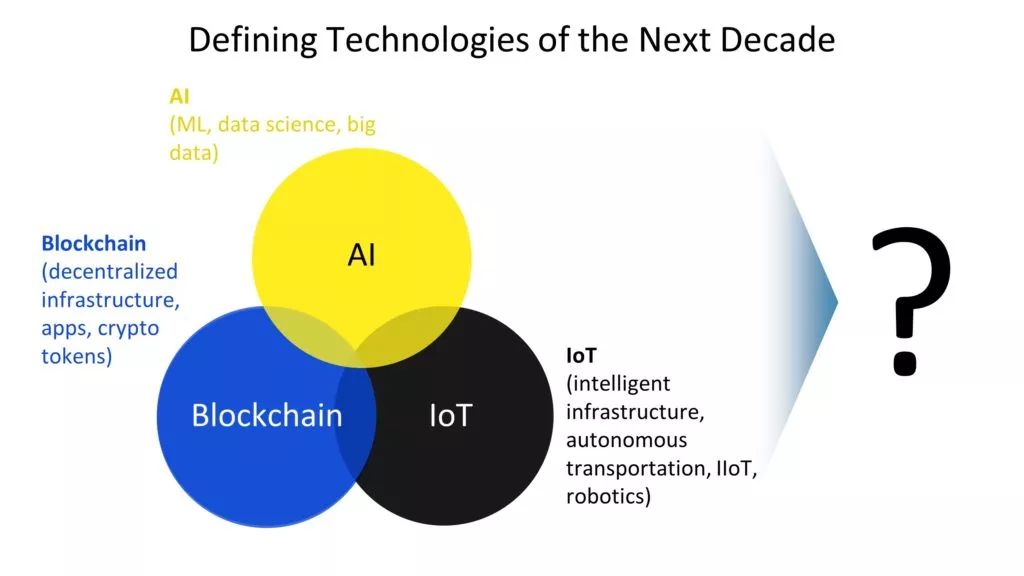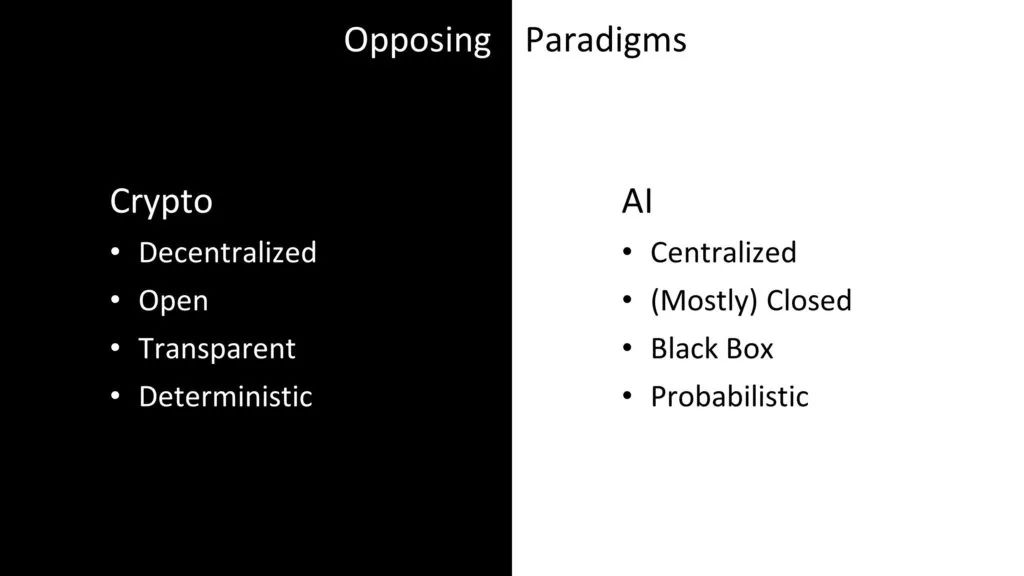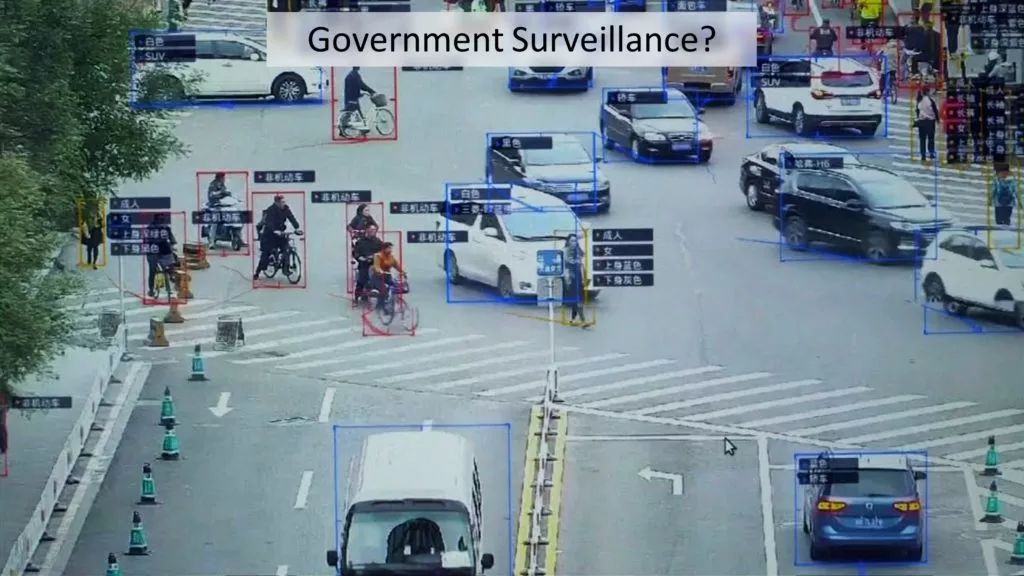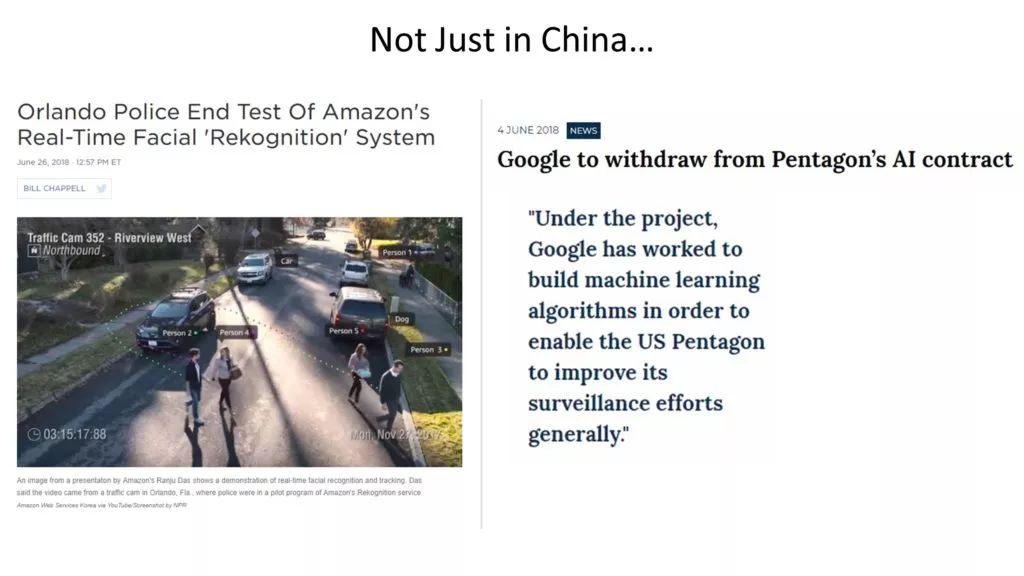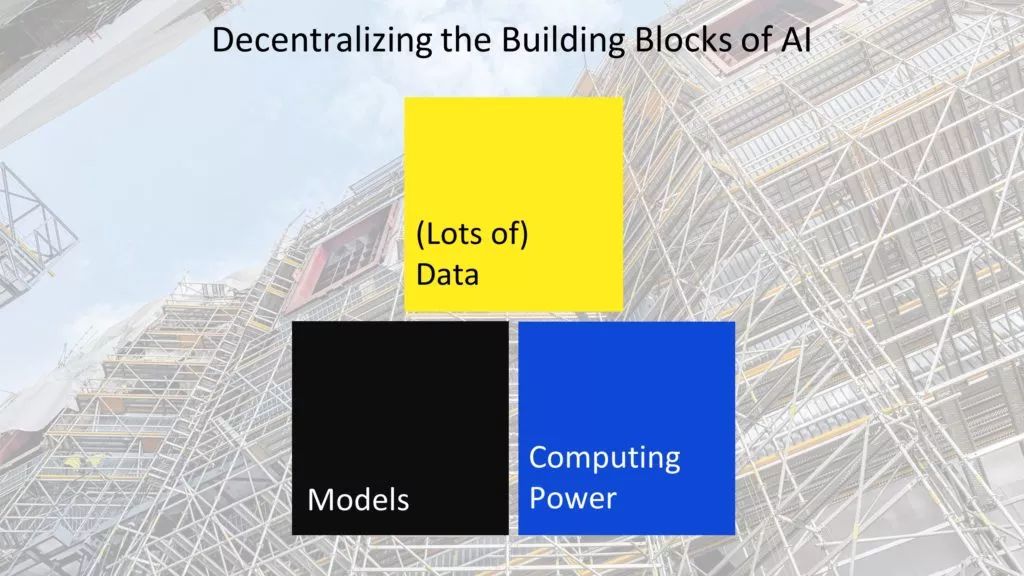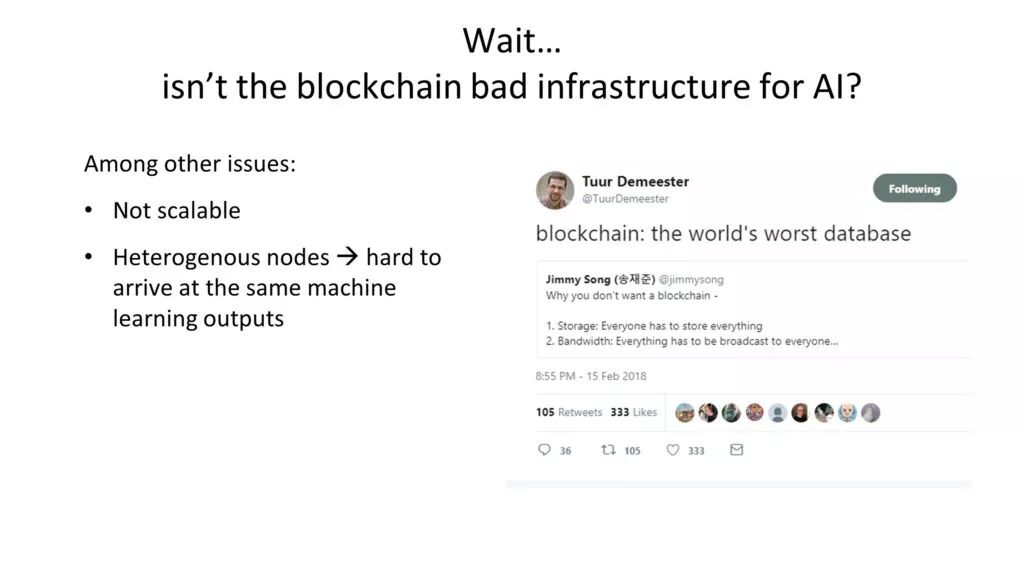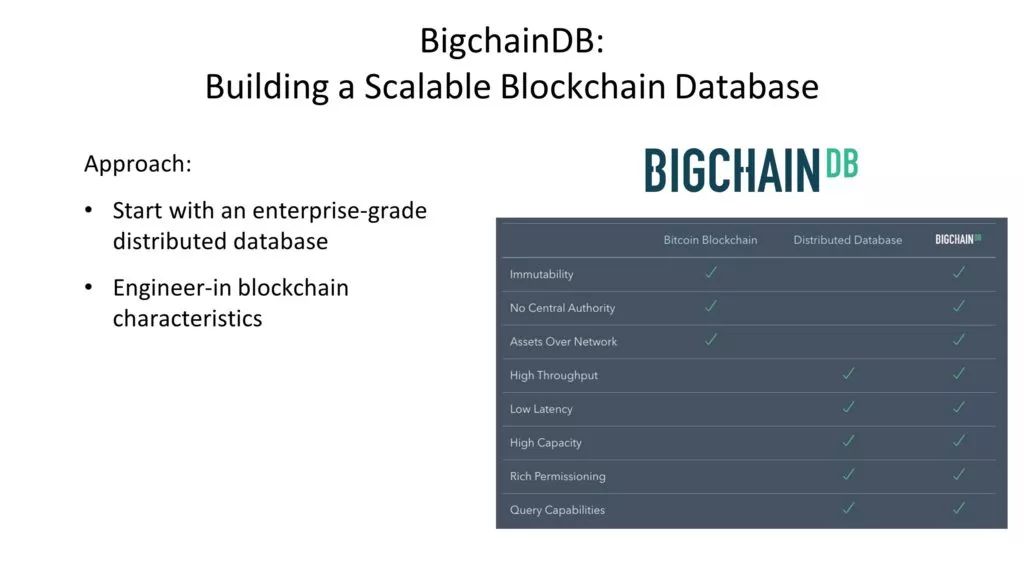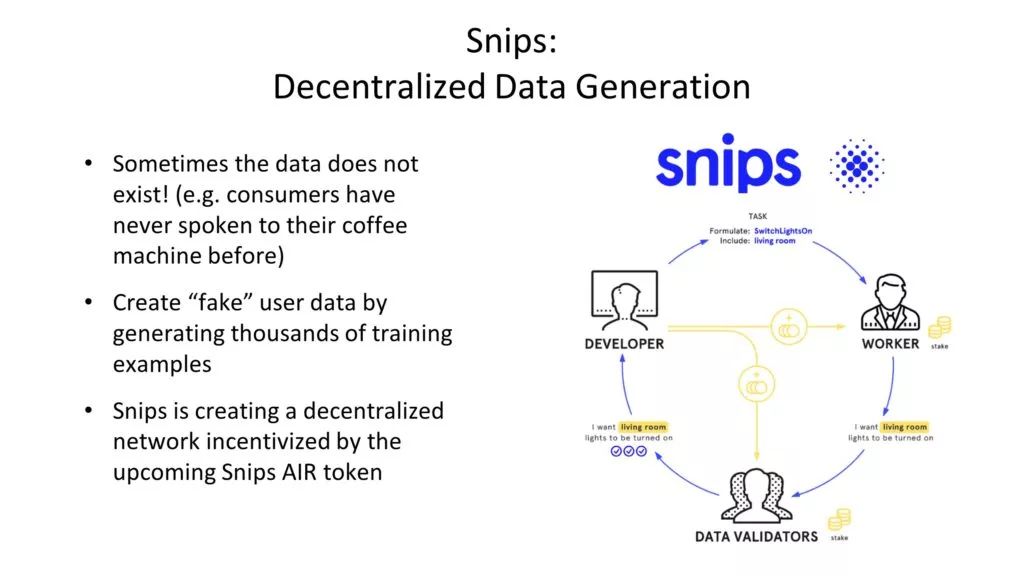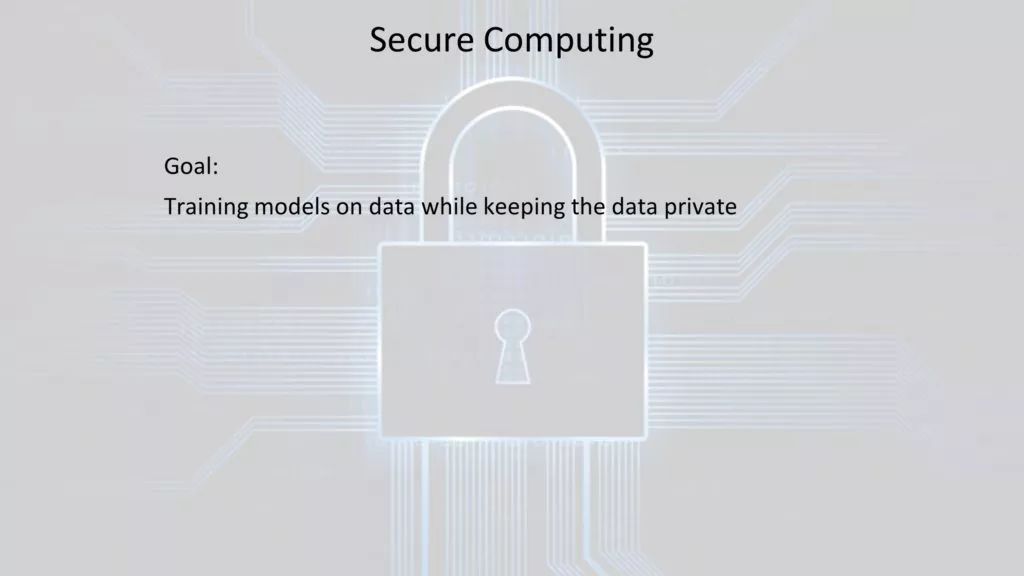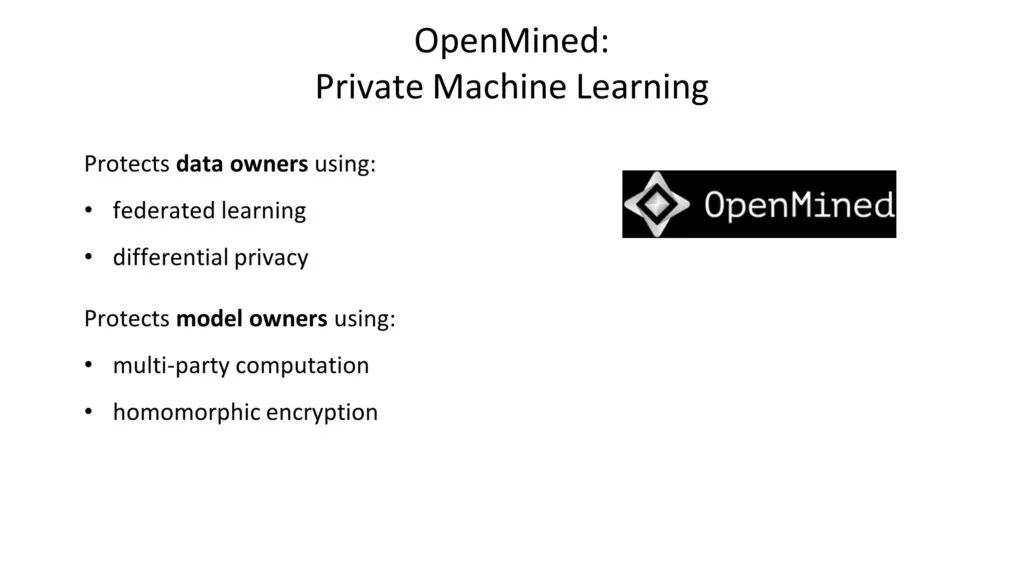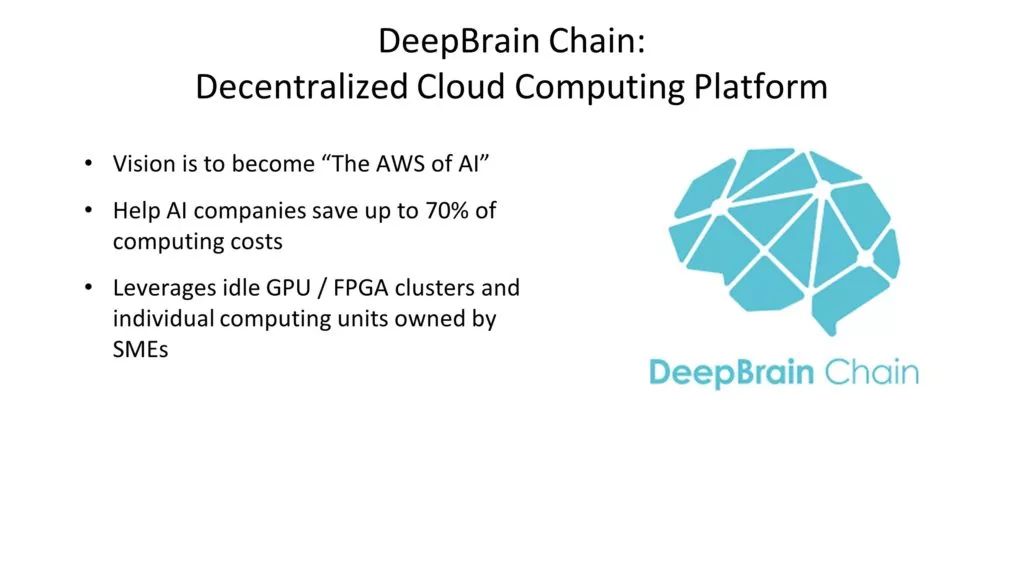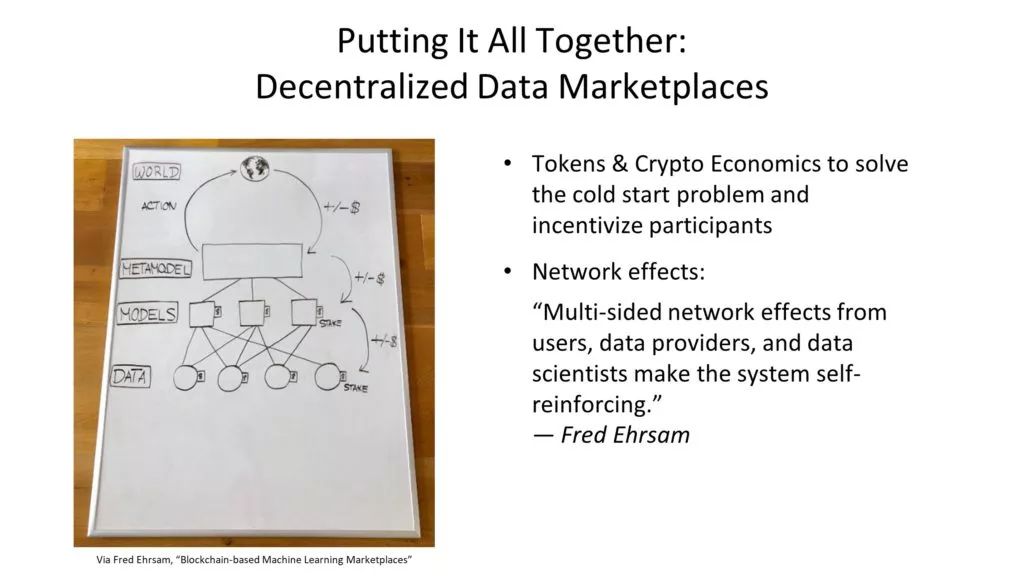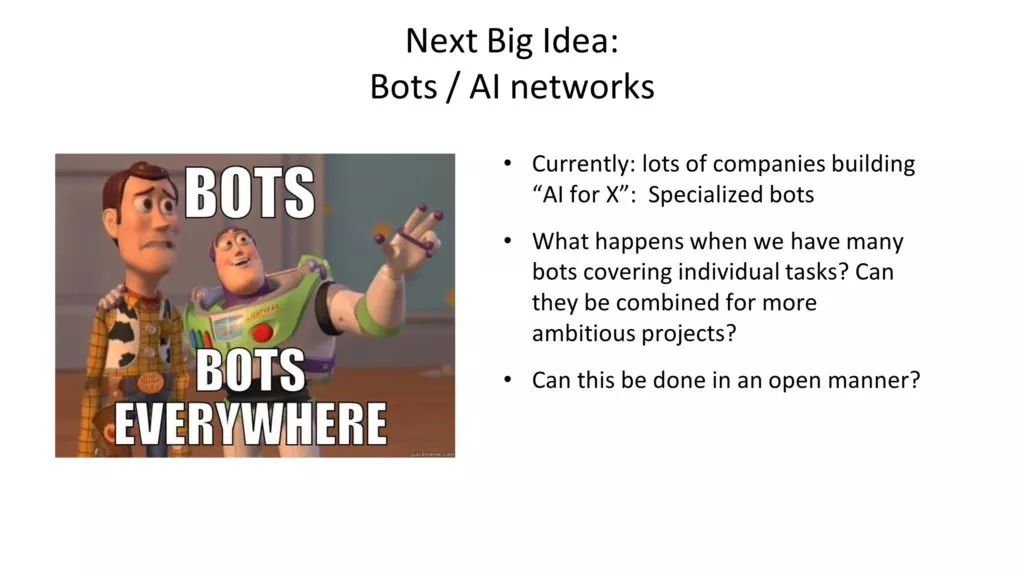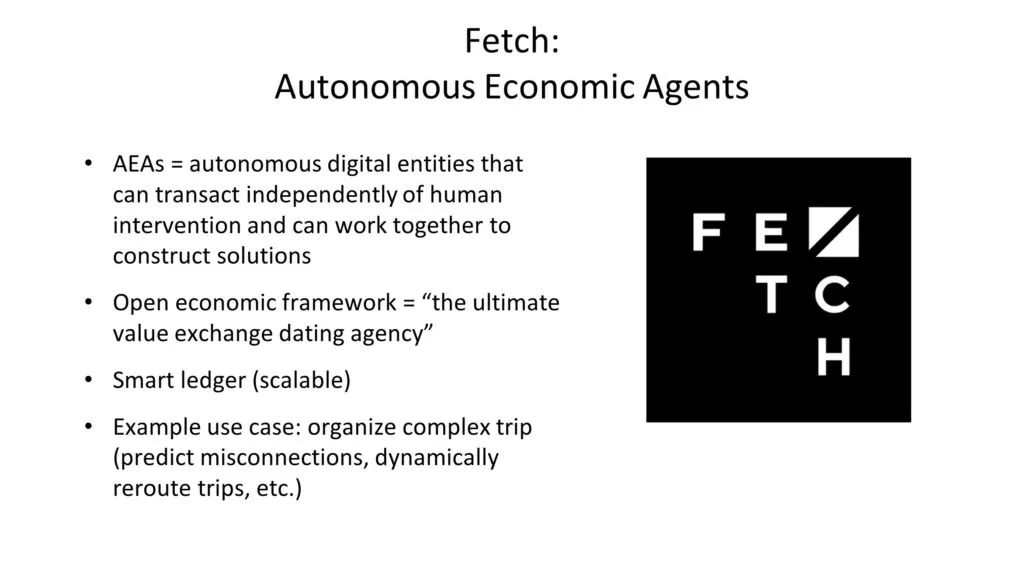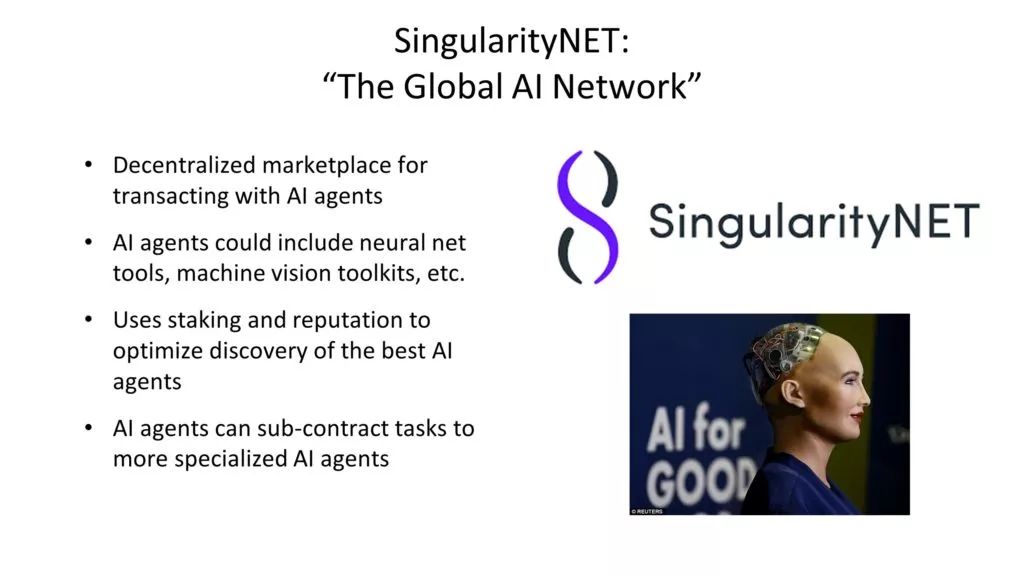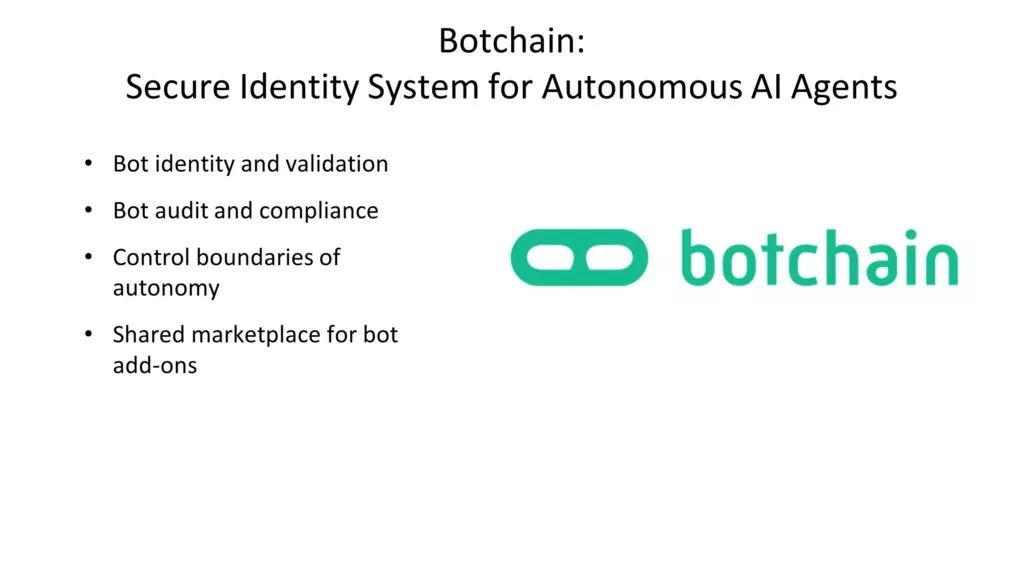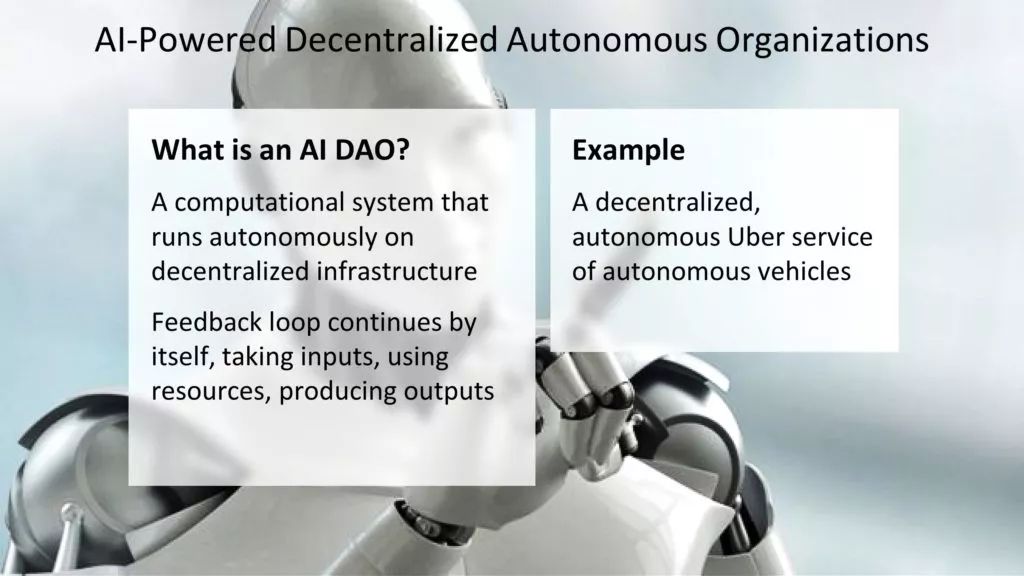人工智能+区块链?
At the kind invitation of Rob May and the Botchain team, I had the opportunity recently to keynote Brains and Chains, an interesting conference in New York exploring the intersection of artificial intelligence and blockchain.
This is both an exciting and challenging topic, and the goal of my talk was to provide a broad introduction to kick things off, and frame the discussion for the rest of the day: discuss why the topic matters in the first place, and highlight the work of some interesting companies in the space.
Below is the presentation, with some added commentary when relevant. Scroll to the very bottom for a SlideShare widget, if you’d like to flip through the slides.
I’m coming at this topic from the perspective of a VC investor. My firm FirstMark has been active in both AI and crypto/blockchain.
It’s certainly easy to poke gentle fun at the topic. AI (machine learning) and blockchain are both experimental and much buzzed about. AI reached a peak of hype in 2016-2017, blockchain in 2017-2018. Each trend individually could very well end up disappointing, and explorations at the intersection of both could prove fruitless.
But if one looks at the history of computing, a massive new trend seems to appear every 10 or 15 years – silicon chips, the PC, the Internet, Web 2.0, etc.
We are probably on the tail end of the current trend, which has been propelled by three concurrent phenomenons: social, mobile and cloud.
Many of the giants we know today emerged from those.
But the magnitude of those trends wasn’t always obvious, of course.
Cloud computing, for example, seems obvious now, but if you rewind back to 2008, it was controversial, and called “marketing snake oil” by some. All in all, it took well over a decade to become the massive industry it is today.
At first, new trends often seem both highly experimental and over-hyped, but over time they take hold, attracting ever more capital and talent, and gradually become the new paradigm.
As per Amara’s law, the impact of new technology is often overestimated in the short run, and underestimated in the long run.
The timing seems ripe for a new paradigm in technology to emerge. What will define and propel the the next big wave of computing innovation?
There’s a rationale for making the argument that “AI, blockchain and the Internet of Things” is the new “Social, Mobile and Cloud”. Those trends are still very much emerging, but their potential impact is massive.
What new giants will emerge from this paradigm?
Just like social, mobile and cloud have fed off each other, those three trends have very interesting areas of overlap. I have discussed at least one example of intersection between the Internet of Things and blockchain, but there is a number of others.
Today, I’ll focus on the intersection between AI and blockchain.
One really interesting starting point is to observe that AI and blockchain are philosophically opposed in many ways, as nicely expressed by Peter Thiel and Reid Hoffman in a recent conversation.
For example, AI is very much centralized – within a handful of companies, primarily Google, Apple, Facebook and Amazon (“GAFA”) and the large Chinese Internet companies, Alibaba, Tencent and Baidu. While some of the AI research is open sourced via academic papers, those companies have been able to attract top AI talent around the world, and most importantly, they have access to unprecedented amounts of data to train their AI algorithms. Those datasets are a massive competitive advantage and are closed to the rest of the world.
The centralization of AI opens the door to all sorts of abuse. Reports of government surveillance in China abound, powered by computer vision and face recognition technologies.
But just over the last few months, stories started surfacing in the US that echoed some of the concerns about China, demonstrating that this is a global concern.
Beyond political issues, centralized platforms tend compete with the ecosystem that emerged around them. Read Chris Dixon’s brilliant essay “Why Decentralization Matters“.
Blockchain emerged as a powerful response to political and organizational problems, rather than purely technical ones.
Since many of the issues we discussed are political and organizational in nature, can it be leveraged as a foil against the pitfalls of AI?
Could blockchain also help create better AI?
Pioneers in the field have been exploring various ideas, ranging from a decentralized way to create AI to networks of bots and fully autonomous organizations run by AI.
We’ll chat today about how blockchain can help AI, but it is worth noting that there is a number of ways AI can help blockchain – another interesting discussion for another day.
The first big idea is to create a decentralized marketplace that would help create better AI.
The high level idea is as follows: All of us (individuals, institutions) would be financially incentivized to provide our personal and professional data. Knowing it would be kept completely secure and private (through decentralization and secure computing), we’d feel more comfortable sharing sensitive data (spending, health information). Over time, the marketplace(s) would accumulate a lot more data, and higher quality data, than what GAFA has access to. On top of the data, machine learning experts would be incentivized to compete and highest performing models would get disproportionally rewarded.
To explore how to build such a decentralized marketplace, let’s chat about how to decentralize the three key building blocks of AI: data, models and computing power.
At this stage of the presentation, we’ll start providing examples of companies doing exciting work at the intersection of AI and blockchain. The space is very vibrant and fast-moving, and this is not meant to be an exhaustive list of all great companies and projects, by any means.
Also worth noting: many companies in the space have ambitious plans to build a lot of pieces of the ecosystem, and many sound a little bit the same. Most of those projects are pre-launch, so it will take time for the dust to settle and see who actually does what in earnest.
Let’s start with data. One important point: if we’re going to use the blockchain to store massive amounts of data, it will need to become a much better database than it currently is.
Here’s BigChainDB, out of Berlin, building a scalable blockchain database. The chart is interesting in that it shows that there is little overlap between what a distributed database offers and blockchain technology. As a result, building a true database-grade blockchain is a challenging project.
To help share data, another key infrastructure component is a protocol.
Ocean Protocol has been doing pioneering work in the field, and for anyone interested in digging in, it’s worth reading just about everything its founder Trent McConaghy has written on the general topic of AI and blockchain.
Computable Labs is also working on building a data market protocol, and this great piece by its CEO Roger Chen is well worth a read as well.
Sometimes you need to create your own data for purposes of AI training – either because you don’t have access to the right data set, or because the use case you are training the AI is too new that the data simply does not exist.
Snips, out of Paris, is using crypto economics to incentivize a network of workers involved in synthetic data generation.
Let’s talk about the second building block of AI: models.
For a decentralized AI marketplace to work, you need to be able to guarantee that whatever data is provided by individuals and companies is processed in a completely private manner. Enter secure computing.
A good example is the OpenMined project, which includes a key focus on private machine learning, leveraging various secure computing techniques, including federated learning (championed by Google) and differential privacy (championed by Apple).
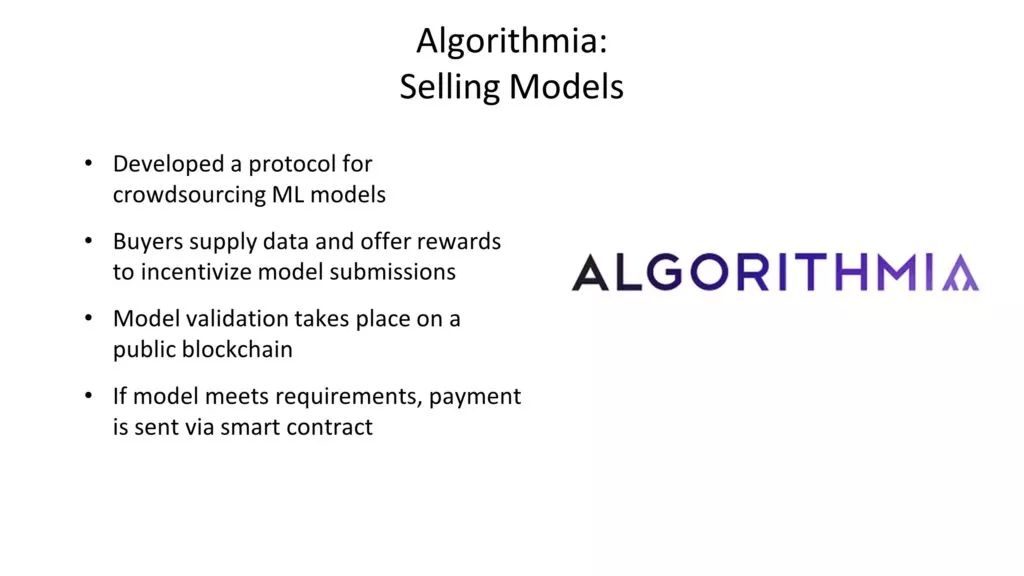
Let’s switch to the third building block of AI: computing power. A lot of the recent progress in AI has been facilitated by a massive ramp in computing power, that resulted both from better leveraging existing hardware, and also building new high performance hardware specifically for AI (Google TPUs, etc).
DeepBrain Chain is an interesting project that aims to share idle computing resources around the world. Its general philosophy is comparable to other projects such as Coronai, Hadron, Golem, or Hypernet, but DeepBrain Chain is more specifically focused on the type of computing power (and related hardware) necessary for the specific requirements of AI.
Putting it altogether, you can imagine a fully decentralized AI marketplace where people provide their data, developers compete to provide the best machine learning models, and the whole system works as a self-reinforcing network that attracts more and more participants and creates better and better AI.
The secret weapon here is really crypto-economics: the ability to create a mini-economy where participants accrue and exchange value through tokens. Because they incentivize people to participate in the network early, tokens help solve the cold start problem which has plagued so many network-building efforts in the past.
The chart showin the slide was taken form Fred Ehrsam’s excellent Medium post: Blockchain-based Machine Learning Marketplaces. The post describes well how a decentralized AI marketplace could work.
Of course, the typical opportunities and challenges of any marketplace apply to this discussion. A decentralized marketplace may be a very novel way to create AI, but whatever comes out of it will still need to reach product / market fit and solve a real problem for it to be commercially successful. From that perspective, verticalized approaches (industrial, genomics, finance, etc.) are particularly interesting.
Now let’s take this discussion one step further. Let’s assume that, in part through decentralized AI marketplaces, AI continues to flourish and accelerate. We would have the ability to create many, many types of AI for just about every task. What would this look like, and how would it work? Blockchain can provide an interesting organizational model to help the various AI bots cooperate in a transparent manner.
Fetch is an example of a company working on building a network to build bots and have them cooperate in an organized manner.
An example of bot cooperation could be a trip: you’d have one bot buy the flight ticket, and if there’s a delay, another bot could predict the likelihood of misconnection, suggest another route, and the first bot could change the reservation. All of this would happen automatically in real-time behind the scenes and completely eliminate friction for us humans.
SingularityNET is another interesting example – a very ambitious, complex project with many moving pieces. As a showcase for how various AIs could cooperate to create a single brain, they’ve developed Sophia, a Hanlon robot that is powered by SingularityNET. The explainer video is pretty wild (and reminiscent of WestWorld).
If we’re going to have a world where we rely on an army of bots to perform various tasks, there needs to be an infrastructure to keep things transparent and under control. This is the mission of Botchain, a new company created by Rob May, also CEO of Talla and organizer of this Brains and Chains conference.
Taking things even further than bot cooperation, you could imagine how entire systems could run completely autonomously, powered by AI.This is the idea of a decentralized autonomous organization or “DAO”.
Many people have heard of “the DAO”, the infamous investor-directed venture capital fund that got hacked in 2016.
The idea of an “AI DAO” goes beyond what the DAO was, in that it could be a decentralized organization entirely run by machines, with no or limited human intervention. For example, fast forward way into the future and you could imagine a completely decentralized version of Uber with self-driving vehicles, run by AI. There would be one gigantic feedback loop where the system would constantly learn how to dispatch cars, transport people efficiently and handle all logistics, combining many skills and complexities into a self-running experience.
One scary thought with this AI DAO concept is that it is unclear how you could stop such an organization if it is truly decentralized and autonomous, in the event it went haywire. It’s not like there’s one plug you can pull to turn off the computer…
In conclusion, a lot of the above is fascinating, but highly experimental. Most of the projects I mentioned are pre-launch, and it’s unclear whether they will be able to pull off the ambitious goals they are pursuing.
At the same time, a lot of foundational work is being done, and the combination of AI and blockchain could create very powerful technologies, at speeds that hard to fully predict. Some of those advances may create undesirable results, so now is certainly a good time to start thinking about the implications.





